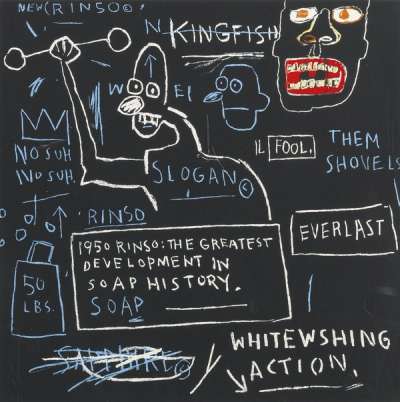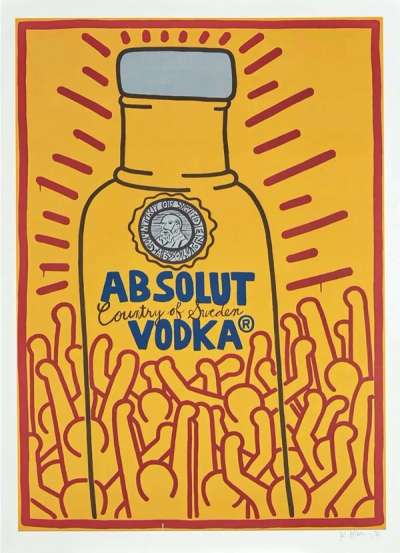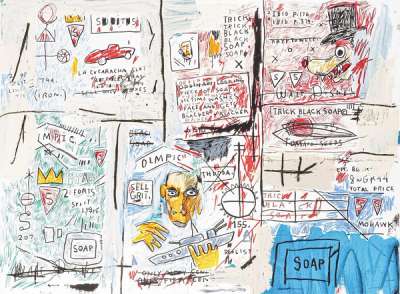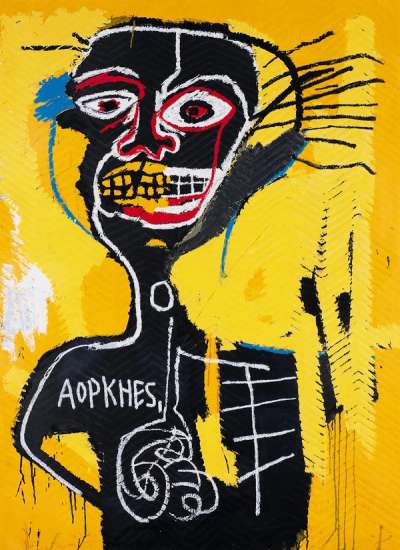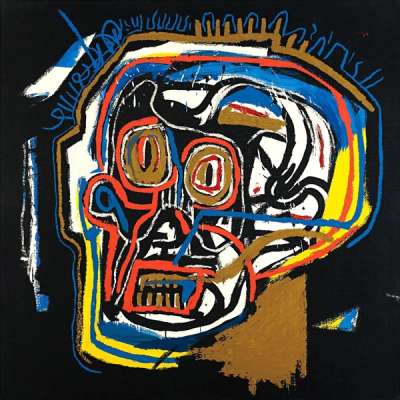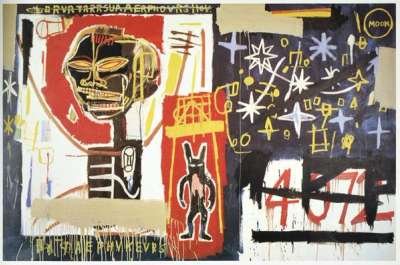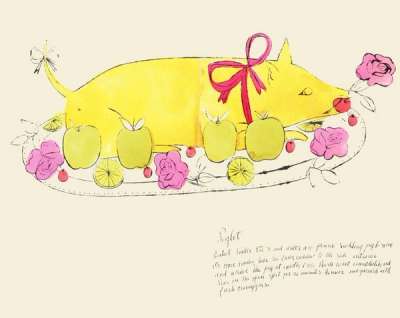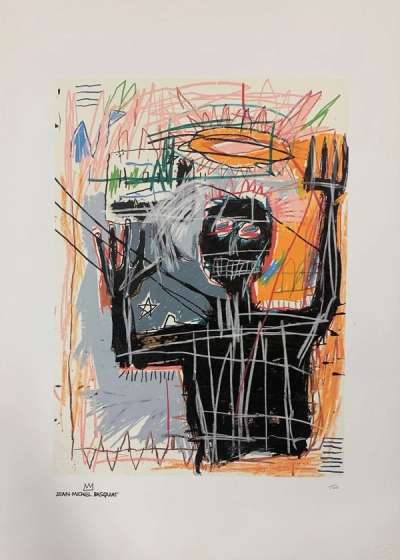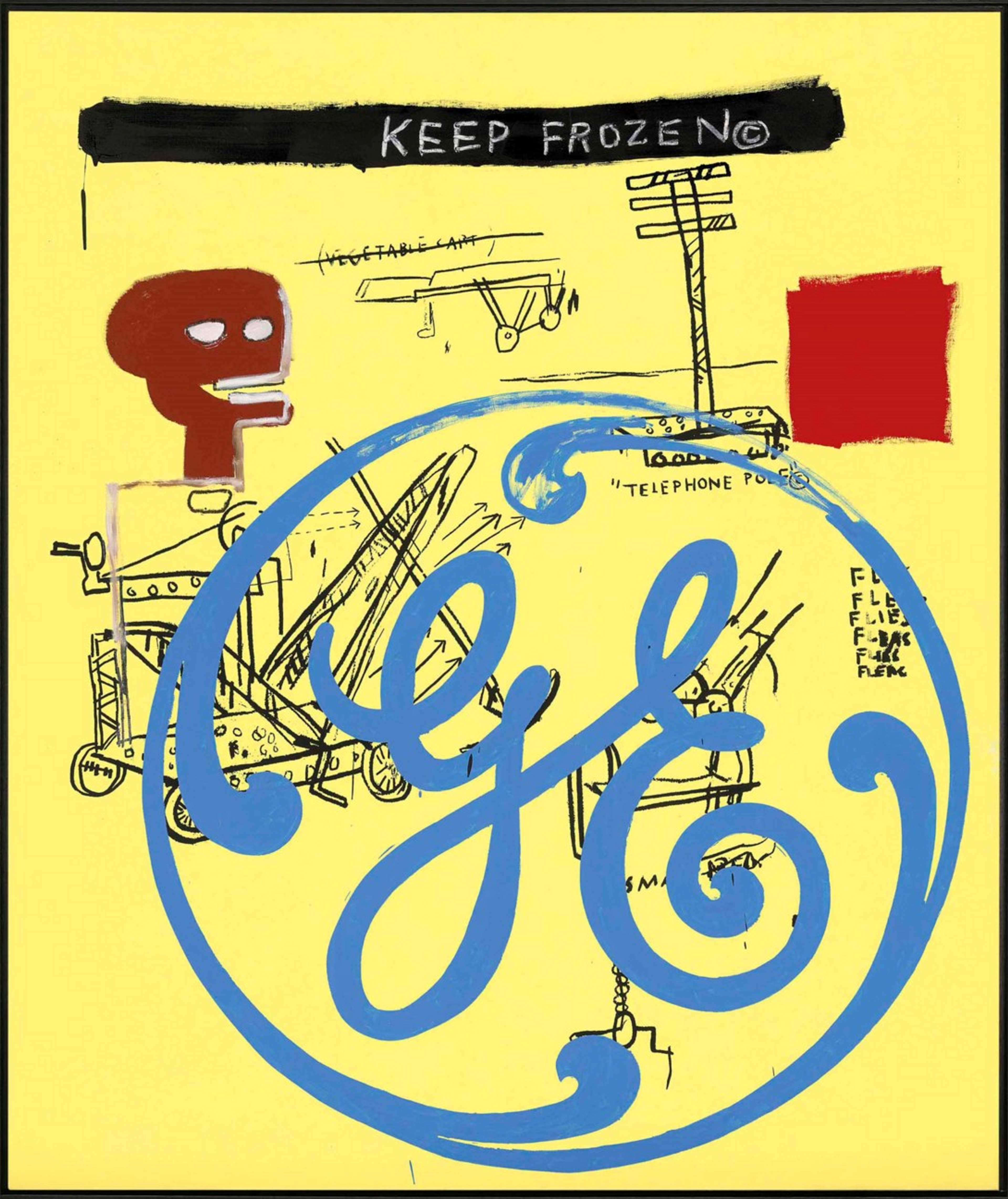Exploring Jean-Michel Basquiat's Collaborations Beyond Warhol

 Image © Christie’s / Casa Del Popolo © Jean-Michel Basquiat and Andy Warhol 1984
Image © Christie’s / Casa Del Popolo © Jean-Michel Basquiat and Andy Warhol 1984
Interested in buying or selling
Jean-Michel Basquiat?

Jean-Michel Basquiat
56 works
Key Takeaways
Jean-Michel Basquiat, a key figure in Neo-Expressionism, is celebrated for his emotive style and sharp social commentary. While Basquiat's partnership with Andy Warhol is well-known and produced unique, experimental works, Basquiat's collaborations extended to many artists, including Keith Haring and Francesco Clemente. His friendship with Haring fostered mutual influence, visible in their exploration of socio-political themes and stylistic evolution. Basquiat's diverse partnerships and influences highlight his expansive creative vision and lasting impact on contemporary art.
Jean-Michel Basquiat was an artist defined by his explosively emotive visual style and extensive exploration of life as an African-American. A prodigious pioneer of Neo-Expressionism, Basquiat is renowned not only for his impressive portfolio of works, but also for his dynamic collaborations with other artists. Despite his short career ending tragically in 1988 from a heroin overdose, Basquiat’s collaborations extended beyond his infamous partnership with Andy Warhol, and his diverse oeuvre of works demonstrate the versatility of his creative vision.
Basquiat’s Collaboration with Keith Haring
Shared Artistic Vision
Both emerging from the gritty streets of 1980s Manhattan, Basquiat met Keith Haring at a nightclub in 1980. Both artists had gained recognition from their work in the streets of New York, Haring for his subway drawings and Basquiat for his SAMO© (Same Old Shit) graffiti tag. Their mutual exploration of socio-political themes including race, identity and inequality facilitated an immediate and natural collaboration, and a relationship fueled by symbiotic admiration and competition was born.
Haring’s kinetic line drawings were inspired by graffiti artists and used bold, illustrative strokes and snappy slogans to bring attention to contemporary issues, including the AIDS epidemic and drug crisis. Basquiat similarly utilised raw, expressive text and distinctive imagery, incorporating historical references, religious iconography and pop culture, to challenge traditions surrounding race, power and social inequality.
Impact on Each Other's Work
Their friendship and creative exchanges had a significant impact on each other's artistic trajectory and their mutual influence is visible in the evolution of their individual styles. Basquiat looked up to Haring as a figure of guidance as he rose through the ranks of the art world, and under Haring’s influence he incorporated a more illustrative style into his work. Haring, on the other hand, was invigorated by Basquiat’s boundless creativity and raw energy, and consequently began to use more abstract imagery within his works.
The result of their complimenting style led to a series of collaborations throughout their relationship. In 2019, the National Gallery of Victoria in Melbourne, Australia showcased their works in the exhibition Keith Haring | Jean-Michel Basquiat: Crossing Lines. This groundbreaking collection of works highlighted their extensive contributions to contemporary art and presented the considerable intersections between their art and lives.
Not only impacting each other, Basquiat and Haring were two of the most prominent figures of the late twentieth century, and become iconic symbols of a new generation utilising their urban environment to challenge established injustices and push for fundamental social change.
Basquiat’s Partnership with Francesco Clemente
The Tripartite Collaboration
One of the most significant partnerships of Basquiat’s career was his relationship with pop-art icon Andy Warhol, facilitated by an original tripartite collaboration between the two men and Italian artist Francesco Clemente. Initiated by Basquiat’s dealer Bruno Bischofberger, the three artists worked together to create a series of artworks that fused their distinct styles, produced by the trio beginning individual pieces and leaving space for the other artists to contribute.
Fusion of Styles and Cultures
Although not the most cohesive method of collaboration, Basquiat's raw, graffiti-infused aesthetics, Warhol's pop art sensibilities, and Clemente's classical influences merged to create unique pieces that defied conventional art categories. Particularly striking works by the three artists include Alba’s Breakfast (1984), Casa del Popolo (1984) and Ex-Ringeye (1984).
Whilst this experimentalism between the three artists continued for roughly a year, by late 1984 Basquiat and Warhol began to collaborate privately without Bischofberger’s knowledge, and eventually Clemete’s collaboration was abandoned.
 Flash In Naples © Jean-Michel Basquiat 1983
Flash In Naples © Jean-Michel Basquiat 1983Working with Musical Icons
Influence of Hip-Hop Culture
Possessing a considerable collection of over 3,000 records, Basquiat’s art contains references to a diverse range of music genres and instruments. In particular, the artist was deeply involved in the hip-hop culture of New York City, and the movement’s focus on racial politics, rebellion and the African diaspora resonated deeply with Basquait’s own motivations. Hip-hop's stylism of dissecting samples and rhythms directly influenced Basquiat’s collage style and can be seen in his works such as Toxic (1984).
Jazz music also played a considerable role within Basquiat’s works, and the influence of figures such as Charlie Parker, Thelonious Monk, Charles Mingus and Dizzy Gillespie is evident throughout his oeuvre. Jazz’s highly improvisational, complex and dissonant nature hugely influenced Basquiat’s style. His experimental, non-linear structures, innovative textured layers and unpredictable colours reflected the essence of jazz. He also incorporated images of Gillespie and Parker directly into his pieces, including Bird on Money (1981), Horn Players (1983) and Arm and Hammer II (1984).
Collaborations with Musicians
Beyond incorporating music into his art, Basquiat transferred his passion into collaborating with musical icons. His artwork has featured on the album covers of a variety of bands such as The Offs and Rammellzee, and Basquait formed his own band Gray, reflecting his multidisciplinary talent.
Basquiat’s Intersection with the Fashion World
Collaborations with Designers
Known for his unique sense of personal style, Basquiat's influence extended into the fashion world through collaborations with designers who admired his work. Infamous for painting in Armani suits, Basquiat was well known in his lifetime to identify with both streetwear and high fashion brands. Modelling for Comme de Garçons in 1987, he also set up his own fashion label, King Pleasure, his raw and unpolished aesthetic translating well into streetwear pieces and bringing his art to a broader audience.
Influence on Fashion and Streetwear
Since his death, Basquiat’s estate has partnered with the licensing and marketing agency Artestar to bridge the gap between the art world and fashion, and ensure his singular style is not forgotten. Global brands including Yves Saint Laurent, Supreme, Dr. Martens, Reebok and Off-White have all released collections in collaboration with Basquait, and highlight his enduring influence and ability to not only intersect the art and fashion worlds, but to continue to spread his message of activism and rebellion through a variety of mediums.
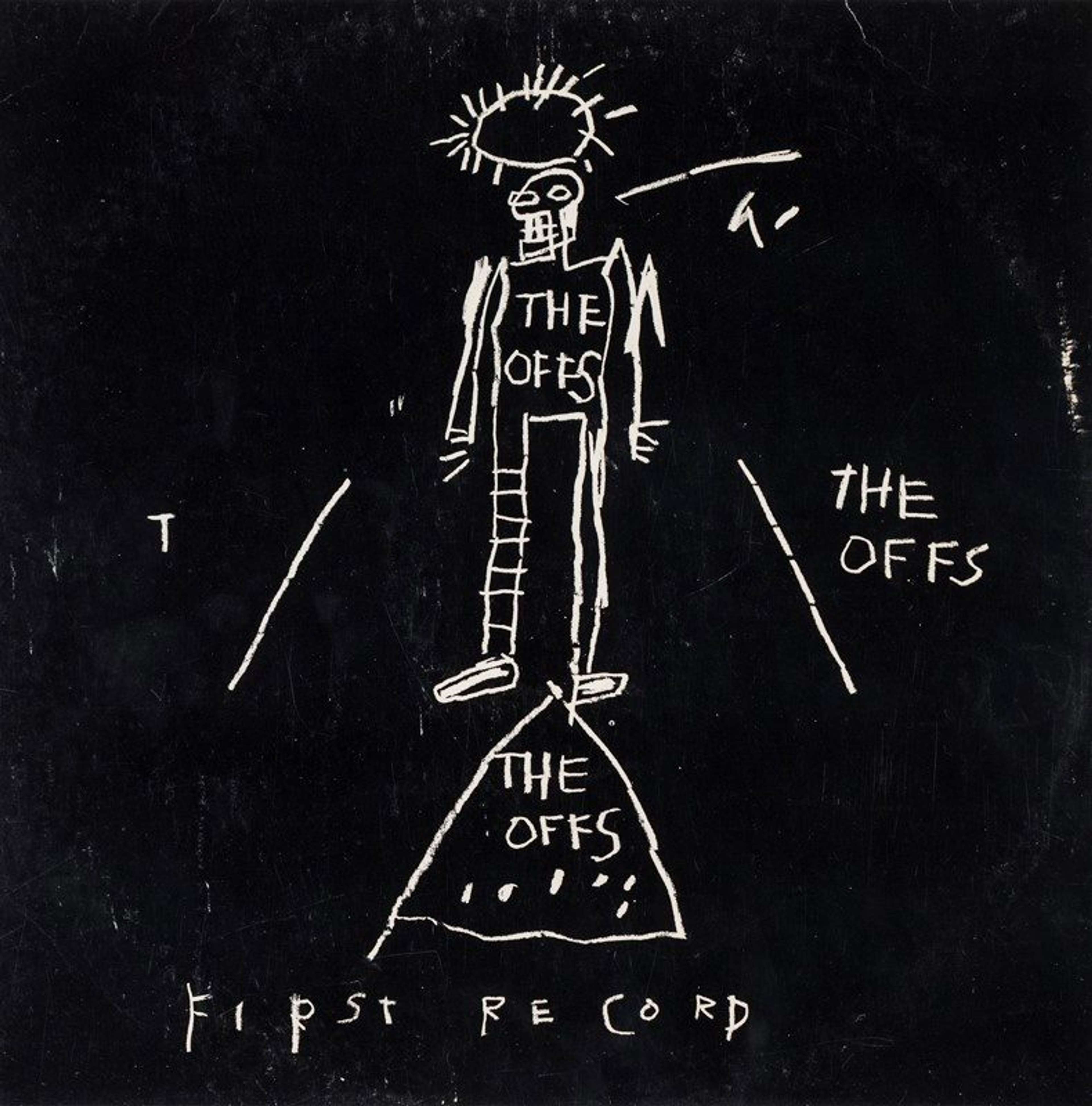 The Offs First Record © Jean-Michel Basquiat 1984
The Offs First Record © Jean-Michel Basquiat 1984Influence of Poet and Mentor, Langston Hughes
Literary Inspirations
Langston Hughes, a leading figure of the Harlem Renaissance, was a significant influence on Basquiat. Hughes's poetry and writings celebrating African American culture and expression resonated with Basquiat and mirrored his own artistic themes.
Artistic and Intellectual Synergy
The intellectual synergy between Basquiat and Hughes’s work was profound, Hughes’ exploration of identity and social struggle inspired Basquiat to incorporate literary elements into his artwork. His use of text and symbolism can be seen as a homage to Hughes’s literary contributions, and his work was deeply inspired by the poet, seen in his work including Defacement (The Death of Michael Stewart) (1983), Untitled Portrait of Langston Hughes (1983) and Jim Crow (1986).
Basquiat’s Collaborations with Emerging Artists
Supporting Young Talent
Basquiat was known for his generosity in supporting emerging artists, providing them with mentorship and exposure. One emerging artist Basquiat collaborated with was Toxic, a fellow graffiti artist who shared a background in street art. Basquiat helped him transition from graffiti to the fine art world, support that was crucial in Toxic's development as an artist.
Another artist significantly influenced by Basquiat was Al Diaz. Diaz, Basquiat's former partner in the late 1970s, collaborated with him in tagging the provocative SAMO© graffiti around Lower Manhattan. This early work together laid the foundation for Diaz's later artistic endeavours, and while Diaz was a contemporary of Basquiat, it was Basquiat's subsequent success that helped elevate Diaz's profile and bring greater recognition to his contributions.
The Legacy of Basquiat’s Collaborations
Basquiat's collaborations showcased his expansive creative vision and remarkable ability to connect with artists across diverse disciplines. These partnerships, ranging from his early graffiti with Diaz to his high-profile collaborations with icons like Warhol and Haring, profoundly enriched his artistic oeuvre. The synergy Basquiat created not only elevated his own work, but also left an indelible mark on his collaborators. His collaborative spirit, characterised by the unfaltering use of his art in the fashion world, continues to inspire new generations of artists, cementing his legacy as a transformative figure in contemporary art.




